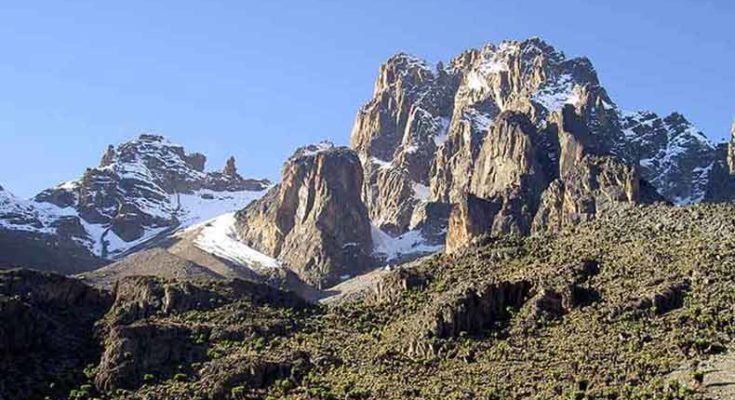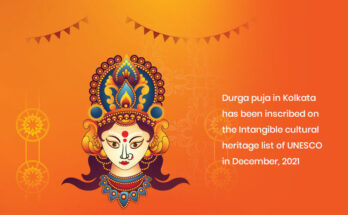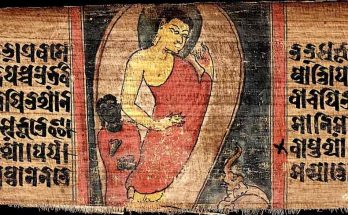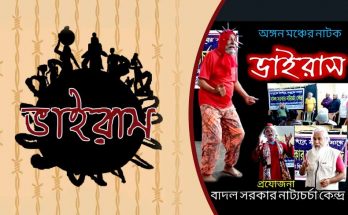Colourful Culture of Kenya – Pt. Thomson Batian Nelion Mount. Image Courtesy – https://www.abercrombiekent.com.au
Geography:
Kenya is situated in East Africa and the outskirts of Somalia toward the upper east, Ethiopia toward the north, Sudan toward the northwest, Uganda toward the west, Tanzania toward the south, and the Indian Ocean toward the east. The nation bestrides the equator, covering a total of 2,24,961 square miles. Kenya has expanded white-sand seasides on the coast. Inland fields spread 75% of the nation; they are for the most part covered by shrubs. In the west are the good countries where the elevation ascends from three thousand to ten thousand feet.
Nairobi is the biggest city of Kenya and the capital; is situated in the center point of the uplands. Mount Kenya is the most noteworthy point and situated at 17,058 feet. Kenya offers Lake Victoria, the biggest lake in Africa and the fundamental water source of the Nile River, with Tanzania and Uganda. Another huge component of Kenyan geology is the Great Rift Valley, the wide, sharp ravine that slices through the uplands. Kenya is additionally home to a portion of the world’s most breathtaking wildlife, including elephants, lions, giraffes, zebras, wildebeests, and numerous uncommon and excellent types of birds. Regrettably, the creature populace is decreasing due to hunting and a growing human populace through the twentieth century. The administration has implemented strict laws managing hunting and has set national parks to protect wildlife.
Demography:
As indicated by statistics in July 2000, Kenya’s population is 30,339,770. The populace has been altogether diminished by the AIDS scourge, as they are having age and sex dispersions. Regardless of this scourge, the birth rate is still essentially higher than the rate of death and the population keeps increasing.
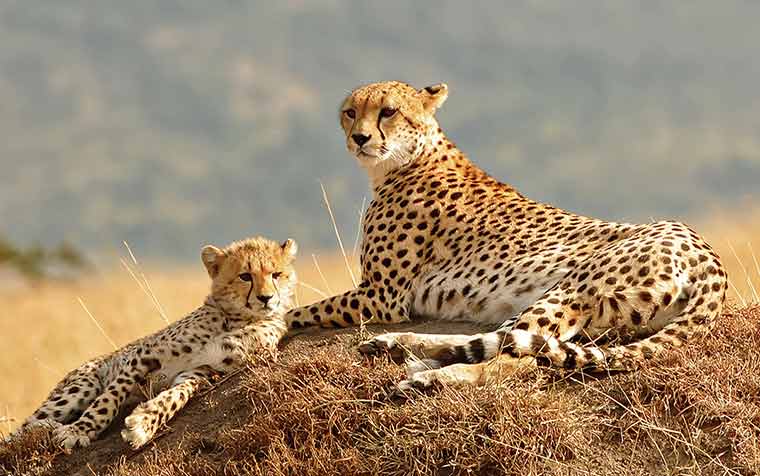
Wildlife of Kenya. Image Courtesy – https://www.abercrombiekent.com.au.
Language:
The culture of Kenya is accumulated with the languages used in the country. The nation has a minimum of 40 distinctive ethnic African communities like Kikuyu, Luhya, Kalenjin tribes, Luo, Kamba, Somali, Kisii, Meru and Embu, Mijikenda, Turkana, Maasai, etc. who talk an assortment of primary languages.
The different languages in Kenya fall into three classifications – ‘Bantu’ (Niger-Congo) languages which are talked by around 65% of individuals, the ‘Nilo-Saharan’ group of languages talked among another third of the population, and the ‘Cushitic’ language, an Afro-Asian dialect talked in the north by around 3% of the population. Added to these groups, Kenya is additionally a country of expansive populations of Europeans, Arabs, Indians, and Pakistanis, a considerable amount of people came here in the 19th century.
Culture:
Local African society has been weakened in numerous parts of Kenya by outside impacts. So for instance, Kenya’s music is regularly a blend of African, Indian, European, and American styles. But, instead of this, the culture of Kenya has been enriched for years.
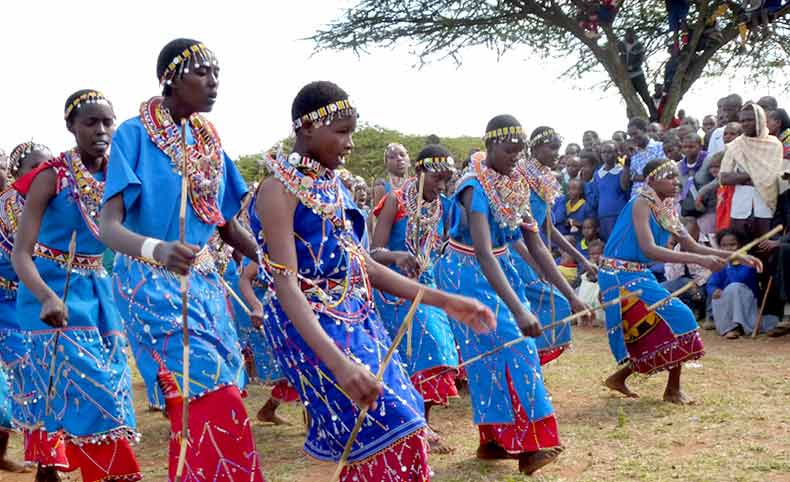
Traditional dance of Kenya. Image Courtesy – https://www.abercrombiekent.com.au
Numerous Kenyan people groups have likewise embraced westernized or Islamic types of dress, with their unique tribal garments, gems, body ornamentation, and weaponry kept for exceptional events or festivities.
However, in specific parts of Kenya, especially over the northern part which is very dry and difficult to reach, groups hold their conventional society and methods for living. Nomadic and people who live priestly like Maasai, Samburu, Turkana, etc. individuals still wear fabrics or skins and also wear beads and metal jewelry.
Among some remote tribes additionally, stay indigenous. In Kenya almost 66% of the individuals are Christian. With the hundreds of years old impact of Arabic and Islamic businessmen, around 15% of Kenyans are Muslim.
Read: Georgia – a different flavour for tourists
Food:
The culture of Kenya also consists of numerous delicious cuisines. Corn (or maize) is the prominent food of Kenyans. It is mixed into the flour and arranged as a porridge called posho, which is some of the time blended with beans, potatoes, and vegetables, to make a dish called ‘irio’. Another prominent dinner is a beef casserole called ‘ugali’. This is eaten from a major pot, and every coffee shop takes a bit of ‘ugali’, which he or she utilizes as a spoon to get beans and different vegetables. Boiled greens, called ‘mboga’, are a typical side dish. Banana porridge, called ‘matoke’, is another basic dish. Meat is costly and is once in a while eaten. Herders rely on milk as their essential nourishment, and fish is prominent on the coast and around Lake Victoria. ‘Mombasa’ is known for its Indian ‘cuisines’ brought by the various immigrants from the subcontinent, including ‘curries, ‘samosa’, ‘chapatti, ‘broiled bread’. Snacks incorporate old fashioned ‘corn’, ‘mandazi’ (a broiled batter), ‘potato chips’, ‘peanuts’ etc.
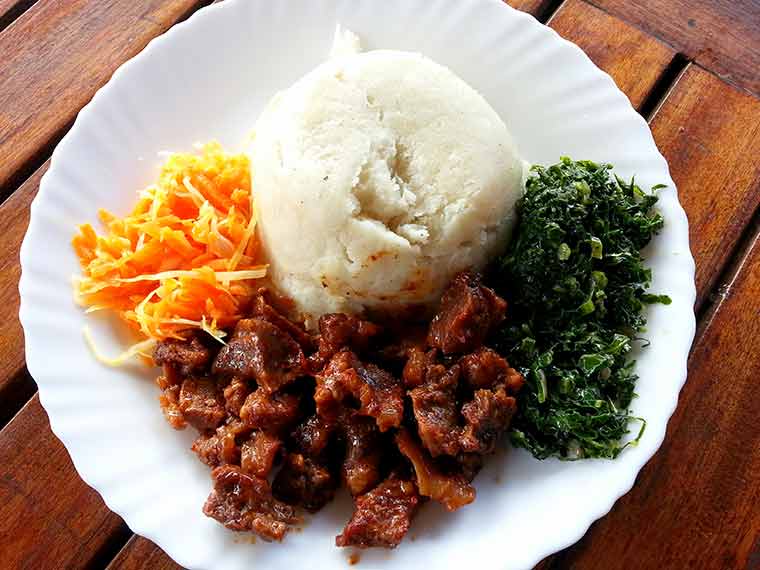
Kenyan food Ugali. Image Courtesy – http://www.trainingarunner.com
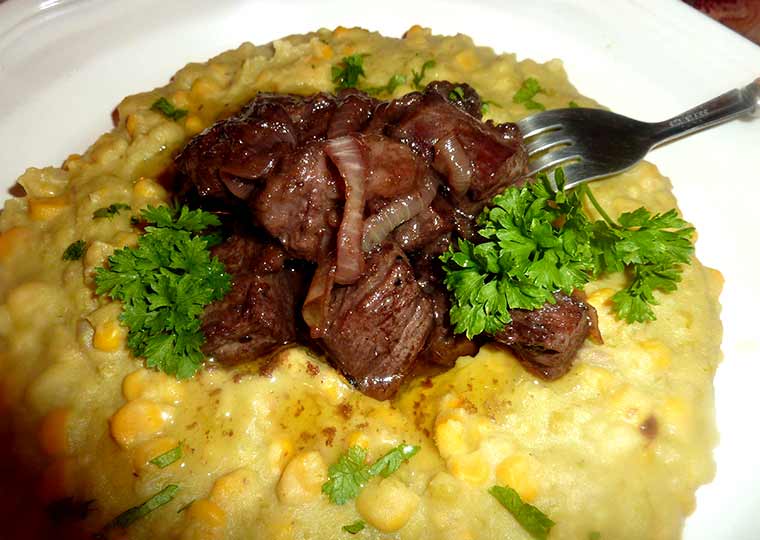
Kenyan Steak and Irio. Image Courtesy – https://dejavucook.wordpress.com
Tea, blended with milk and sugar is a typical beverage. Palm wine is another mainstream drink, particularly in Mombasa. A large amount of beer is produced locally by the Kenyan Breweries. So, beer is omnipresent there. One exceptional kind of mix which is made with honey is called ‘uki’.
Marriage & Relation:
The traditional custom for marriage as per the culture of Kenya has also been changed due to the impact of other religious beliefs. Polygamy is seen as their traditional custom, and in the past, it was common for men to have five or six spouses. This custom has been turning out to be less as it has been contradicted by Christian missionaries, and is progressively illogical as a couple of men can stand to support various partners. At the point when a man picks a potential spouse, he arranges a lady for the cost of cash or cows with the lady’s dad. The cost is higher for a first spouse than subsequent ones. The ‘wedding ceremony’ and ‘reception party’ is generally organized in the husband’s home.
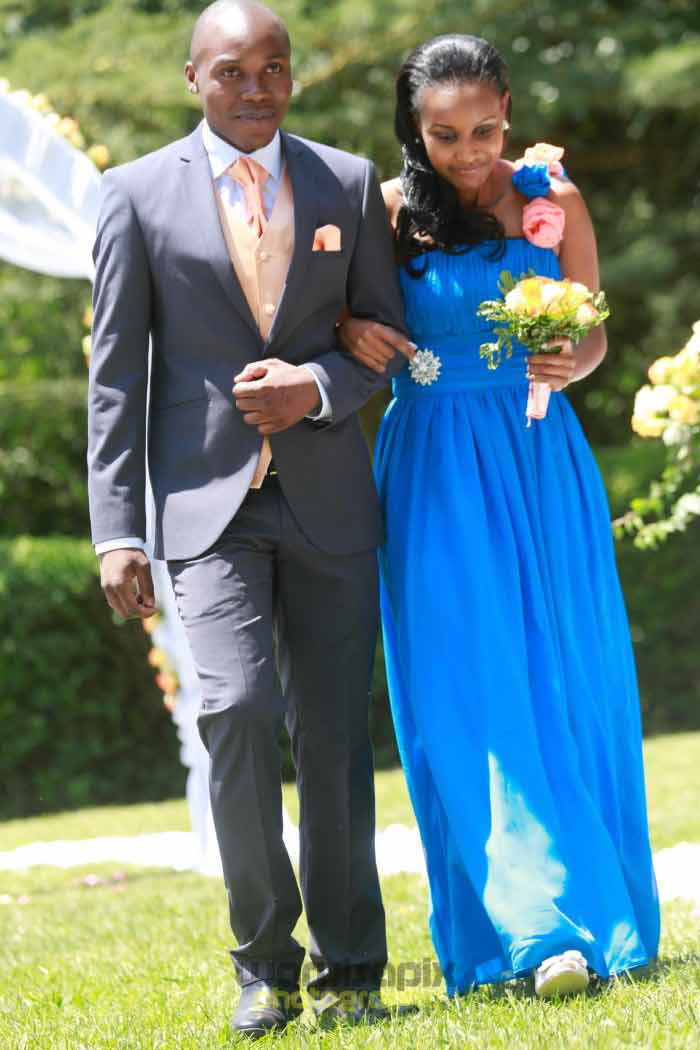
Kenyan Wedding. Image Courtesy – https://waruisapix.wordpress.com
In the customary living course of action, a man fabricates a different house for each of his spouses, where she will live with her youngsters and a hut for himself. In a family with one spouse, the guardians use to live respectively with girls and more young boys, while the older boys use to live in littler houses close by. It is a tradition to live together in the same house for several generations. As indicated by convention, it is the liability of the most youthful child to administer to his aging guardians. In ‘Maasai’, houses are partitioned into four areas – one segment for the ladies, one segment for the kids, one segment for the spouse, and one segment for cooking and eating.
Legacy:
As indicated by the tradition of Kenya, legacy goes from father to child. This is still running today, and there are legal and social impediments for girls to acquire the property.
According to the culture of Kenya, 38% of the population is Protestant and 28% is Roman Catholic, 26% are animist, 7% are Muslim, and 1% remain as different religions. Numerous individuals include customary convictions into their routine of Christianity, bringing on somewhere in the range of pressure amongst Kenyans and Christian churches, especially on the issue of polygamy. Religious practices of various ethnic groups fluctuate, however one normal component is the belief in the spiritual world. The Kikuyu and a few different groups worship the God Ngai. IT is said the God Ngai lives on top of Mount Kenya.
Read: Did you ever make a trip to magnificent Singapore?
Customs and Holy Places:
Among the Masai, the start of the rainy season is seen with a festival that goes on for a few days and incorporates singing, moving, eating, and appealing to God for the wellbeing of their creatures. According to their tradition, the entertainers colour their hair with red, paint dark stripes on their bodies, and wear ostrich-plume hoods. The Kikuyu mark the beginning of the planting season with their own ceremonies. Their ‘ceremonial dances’ are frequently performed by warriors wearing panther or zebra skin like a long, loose outer garment reaching to the ankles, conveying ‘spears’ and ‘shields’. The artists colour their bodies blue and paint them in white patterns.
Death and Afterlife:
At death, Kenyans trust that one enters the soul world, which has an awesome impact on the realm of the living. Numerous Kenyans have faith in rebirth, and kids are thought to be the incarnation of the souls of a family’s predecessors.

